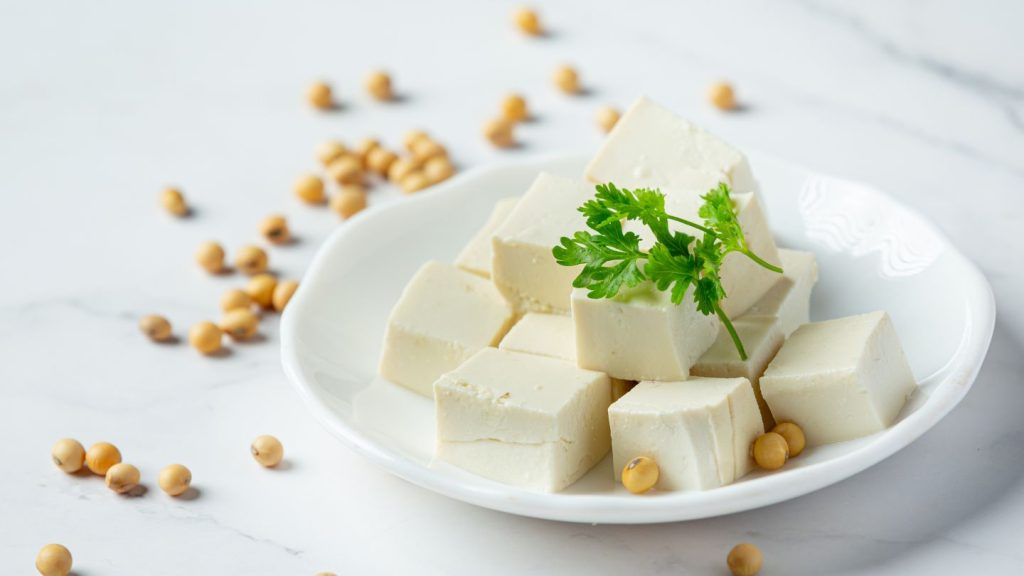
When Can I Eat Cheese After Gastric Sleeve? Essential Diet Tips
After undergoing gastric sleeve surgery, adjusting to a new diet is essential for recovery and long-term success. Many patients wonder when they can reintroduce their favorite foods, like cheese, back into their diet. In this blog, we’ll explore when it’s safe to eat cheese after a gastric sleeve, how to incorporate it into your meals, and tips for maintaining a balanced, healthy diet during your post-surgery journey. Additionally, we will discuss the importance of making mindful choices about what to eat food post-surgery to ensure optimal recovery and avoid complications.
Key Takeaways
- Introduce cheese gradually, starting with cottage cheese, about eight weeks post-gastric sleeve surgery.
- Monitor portion sizes carefully, emphasizing low-fat and soft cheeses to avoid digestive discomfort and support nutritional balance.
- Seek expert guidance from healthcare providers to ensure informed dietary choices and effective recovery strategies.
Understanding Gastric Sleeve Surgery
Gastric sleeve surgery, also known as sleeve gastrectomy, is a transformative weight loss surgery designed to help individuals struggling with obesity. During the procedure, a significant portion of the stomach is removed, leaving behind a narrow, sleeve-like structure. This reduction in stomach size not only limits the amount of food you can eat but also helps reduce hunger by lowering the production of the hunger hormone ghrelin.
Typically performed laparoscopically, gastric sleeve surgery involves small incisions and a camera to guide the surgeon, resulting in a less invasive procedure with a quicker recovery time. Most patients can expect to spend a few days in the hospital and several weeks recovering at home. The ultimate goal of this surgery is to facilitate substantial weight loss and improve overall health, making it a powerful tool in the fight against obesity.
The Journey to Eating Cheese Post-Gastric Sleeve
Embarking on gastric sleeve surgery is an important step towards your weight loss aspirations, but it requires significant changes to your diet. Adapting to a smaller stomach after the procedure means learning how to slowly reincorporate different foods into your meals in order to prevent discomfort and aid in recovery.
Approximately eight weeks after undergoing gastric sleeve surgery, you can start reintroducing cheese—a staple for many—into your diet with caution. This period allows time for you to adjust to new eating habits facilitated by the reduced size of your stomach pouch. It’s essential when bringing cheese back into your regimen that you do so one item at a time, taking care not only of quantity but also observing how each addition affects your body. Knowing when to stop eating is crucial to avoid discomfort and ensure proper digestion.
To sustain long-term success and avoid any potential weight gain post-surgery, vigilance in adhering to dietary guidelines is key. The goal remains: savoring sugar-free favorites while sustaining a nutritious balance tailored to fit this fresh phase of life, which ensures that both enjoyment and health go hand-in-hand with achieving ongoing weight management targets.
Post-Surgery Diet Progression
After gastric sleeve surgery, adhering to a structured post-surgery diet progression is crucial for healing and achieving weight loss goals. This progression is typically divided into four phases:
- Phase 1: Clear Liquids (Days 1-2) – Immediately after surgery, your diet will consist of clear liquids such as water, broth, and sugar-free gelatin. This phase helps your stomach heal without the strain of digesting solid foods.
- Phase 2: Full Liquids (Days 2-14) – As you progress, you can introduce full liquids like protein shakes, milk, and smooth soups. These liquids provide essential nutrients while still being gentle on your stomach.
- Phase 3: Soft Foods (Days 14-30) – Around two weeks post-surgery, you can start incorporating soft foods such as scrambled eggs, cottage cheese, and pureed vegetables. These foods are easy to digest and help transition your stomach to more solid foods.
- Phase 4: Solid Foods (After 30 Days) – After a month, you can begin to reintroduce solid foods into your diet. Start with small portions and chew food thoroughly to avoid any discomfort. Focus on nutrient-dense options like lean proteins, cooked vegetables, and whole grains.
Following these phases diligently ensures that your body receives the necessary nutrients while allowing your stomach to heal properly.
Reintroducing Cheese: Step-by-Step Guide

Embarking on the path to welcoming cheese back into your diet should be done with careful planning. It’s often advised to start with cottage cheese, which is recognized for its soft consistency and substantial nutritional benefits. Within the initial week after surgery, it is typically recommended to eat cottage cheese because of its mild effect on your digestive system.
Start off by eating small amounts of cottage cheese and monitor how your body responds. If you find that you can handle it without issue, you’re free to slowly increase the quantity consumed. It’s important to introduce only one new food at a time and allow your system ample opportunity to adapt before incorporating another item.
By following this gradual reintroduction strategy, you’ll ensure that consuming cheese is both safe for recovery and allows you to delight in its advantages without jeopardizing postoperative healing.
Cottage Cheese: Your First Cheese Option

Following gastric sleeve surgery, cottage cheese emerges as an excellent first dairy option due to its smooth consistency and substantial protein content. This makes it particularly suitable for the early phase of your post-op diet since it’s more digestible than firmer cheeses, minimizing potential discomfort. Patients should also avoid raw vegetables during the initial recovery period and opt for well-cooked or canned vegetables instead.
For individuals adhering to a post-bariatric diet, a half-cup serving of cottage cheese is advised. Such quantity offers an appropriate nutrient mix without imposing strain on your newly formed pouch. As you progress from pureed foods toward softer dietary choices, integrating cottage cheese can serve as a valuable intermediary step toward incorporating semi-solid food items.
Similarly beneficial are soft dairy products like Greek yogurt that complement the inclusion of cottage cheese in your diet. These selections play a significant role in fulfilling nutritional requirements while facilitating healing during recovery after undergoing gastric sleeve surgery.
Soft Cheeses and Their Role in Recovery
Ricotta and mozzarella, being soft cheeses with a high protein content, facilitate recovery due to their ease of digestion. These cheeses deliver crucial nutrients that aid in healing and contribute to the balance of your diet.
Cottage cheese, known for its softer texture, can be digested more comfortably than harder varieties. This makes it particularly suitable during initial recovery phases when easing into new dietary habits without inducing discomfort is important.
Nevertheless, regulating portion size is critical. Despite the digestibility of soft cheeses like cottage cheese, moderation is key to avoiding digestive problems and ensuring they don’t replace other vital nutrient-rich foods in your diet—including those that require chewing and provide solid food variety.
Hard Cheeses: Timing and Portion Control

After your body has adapted to consuming softer cheese types, you may begin to slowly introduce harder cheeses into your meals. It is important to add these firmer varieties cautiously and in modest amounts so as not to overload your digestive system. Closely observing how your body responds will help determine if it can handle these denser foods.
Managing the quantity of hard cheese you eat is vital due to its high-calorie content, which could potentially crowd out other vital nutrients in your diet. By keeping serving sizes small, you’re able to enjoy their taste without upsetting the nutritional equilibrium of your meals.
When integrating cheese into a post-gastric sleeve eating regimen, remember that it should not displace foods with higher nutrient value. Thoughtful management of portions enables you to indulge in hard cheeses while still maintaining progress toward weight loss goals.
Balancing Cheese with Nutrient-Dense Foods
Incorporating cheese into a balanced diet after surgery means pairing it with other foods that are rich in nutrients. Opt for low-fat choices such as cottage cheese, which offers plenty of protein with minimal fat content, aiding you to satisfy your nutritional requirements without an overload of calories.
Due to the high energy content found in cheeses, it’s important to consume them in modest quantities. This strategy allows space for diverse nutrients within your diet. When adding cheese to meals, do so alongside vegetables, lean proteins, and whole grains for a well-rounded nutrient profile while still enjoying the variety of tastes that different cheeses offer.
To ensure you’re getting proper nutrition post-surgery while indulging in your favorite dairy products like cheese, keep a daily log of what you eat and track your protein consumption. Monitoring how your body responds to eating cheese after undergoing gastric procedures is vital for maintaining appropriate nourishment levels.
Avoiding High-Fat Cheeses
Individuals recuperating from gastric sleeve surgery should be cautious about consuming high-fat cheeses, such as cream cheese and cheddar. It is advisable to limit these types of cheese to avoid an overload of fats and potential gastrointestinal complications. High-fat cheeses tend to offer less nutritional value and can occupy stomach space rapidly, which might block the consumption of other vital foods.
Opting for low-fat cheese varieties is a wise move in incorporating cheese into your diet while maintaining a check on calorie intake. By selecting cheeses with lower fat content, one can relish their taste and health benefits without negatively impacting weight loss efforts.
Steering clear of opulent or creamy cheeses also aids in avoiding digestive troubles and reinforces objectives related to sustaining weight control over time. Through conscientious food selections, it’s possible to include cheese within a well-rounded dietary regimen.
Monitoring Tolerance and Adjusting Intake
In order to mitigate digestive issues following gastric sleeve surgery, adhere to these measures:
- Observe how your body reacts after consuming cheese.
- Start by eating small quantities of cheese and increase it slowly.
- After initial consumption, pause for 10 minutes before having more in order to gauge your body’s tolerance level. Knowing when to stop eating is crucial to prevent discomfort and ensure proper digestion.
- Should discomfort arise, consider decreasing the size of your servings.
- If necessary, seek advice from your healthcare professional.
Adhering to these recommendations will aid you in regulating your post-operative consumption of cheese.
Logging any symptoms can be instrumental in determining which varieties of cheese are more easily digested by you post-surgery – with a special emphasis on the potential distress caused by high-fat cheeses necessitating vigilant moderation.
By attentively observing how your body responds to different amounts and types of cheese consumed, you’re able to fine-tune intake levels that align with comfortable digestion during recovery from gastric sleeve surgery.
Long-Term Lifestyle Changes
Gastric sleeve surgery is a powerful tool for weight loss, but achieving and maintaining long-term success requires significant lifestyle changes. Here are some key strategies:
- Balanced Diet: Focus on a diet high in protein and low in sugar and fat. Incorporate lean meats, fish, eggs, low-fat dairy products, and plenty of cooked vegetables to ensure you get the nutrients you need without excess calories.
- Mindful Eating: Avoid overeating by eating slowly and paying attention to your body’s hunger and fullness cues. Chew foods thoroughly to aid digestion and prevent discomfort.
- Hydration: Drink plenty of water throughout the day to stay hydrated. Aim for at least 64 ounces daily, but avoid drinking during meals to prevent overfilling your stomach.
- Physical Activity: Engage in regular physical activity to support weight loss and overall health. Find activities you enjoy, such as walking, swimming, or yoga, and incorporate them into your routine.
- Supplements: Take vitamin and mineral supplements as recommended by your healthcare provider to ensure you meet your nutritional needs, especially since your reduced stomach size may limit your ability to consume enough nutrients from food alone.
By committing to these long-term lifestyle changes, you can maximize the benefits of your gastric sleeve surgery and achieve lasting weight loss and improved health.
Tips for a Successful Recovery
Recovering from gastric sleeve surgery requires careful attention to your body’s needs and following your healthcare provider’s recommendations. Here are some tips to ensure a smooth recovery:
- Follow the Diet Progression: Adhere to the post-surgery diet phases to allow your stomach to heal and adjust to new eating habits. Each phase is designed to provide the necessary nutrients while minimizing discomfort.
- Attend Follow-Up Appointments: Regular check-ins with your healthcare provider are essential to monitor your progress, address any concerns, and adjust your diet or supplements as needed.
- Take Supplements: Ensure you take vitamin and mineral supplements as recommended to prevent deficiencies and support overall health.
- Stay Hydrated: Drink plenty of water throughout the day, but avoid drinking during meals to prevent overfilling your stomach.
- Rest and Recover: Avoid overexerting yourself and take regular breaks to rest. Gradually increase your activity level as you feel more comfortable.
- Seek Support: Lean on family and friends for support, or consider joining a support group for individuals who have undergone weight loss surgery. Sharing experiences and advice can be incredibly helpful during your recovery journey.
By following these tips, you can support your body’s healing process and set the foundation for long-term success after gastric sleeve surgery.
Summary
Reintroducing cheese after gastric sleeve surgery is a gradual process that requires careful planning. Starting with soft cheeses like cottage cheese and progressing to other varieties while keeping portions in check will help you enjoy this food as part of a balanced, nutritious diet. With the right approach, cheese can be a healthy addition to your meals, supporting your recovery and long-term weight loss goals.
At Lenox Hill Bariatric Surgery Program Program, we provide expert guidance to help you navigate life after surgery. Whether you need advice on reintroducing foods or achieving your weight loss milestones, our team is here to support you every step of the way. If you’re considering a gastric sleeve in NYC or looking for post-op nutritional guidance, we’re here to help you build a healthier, more fulfilling lifestyle.
Frequently Asked Questions
When can I eat cottage cheese after bariatric surgery?
You can typically eat cottage cheese within the first week after bariatric surgery, as it offers a suitable texture and high protein content for post-operative recovery.
When can you eat a sandwich after gastric sleeve?
You can generally start eating bread, including sandwiches, around 6–8 weeks after gastric sleeve surgery.
It’s important to consult your healthcare provider for personalized guidance.
Can I eat mashed potatoes after gastric sleeve?
Yes, you can eat mashed potatoes after gastric sleeve surgery, but they should be consumed in moderation and as part of a diet that prioritizes high-protein foods while avoiding sugar and fat.
It’s important to focus on the overall nutritional balance for optimal recovery. Additionally, patients should avoid raw vegetables during the initial recovery period and opt for well-cooked or canned vegetables instead.
When can I eat eggs after gastric sleeve?
You can start eating eggs about three to four weeks after gastric sleeve surgery when you transition to a soft diet.
Focus on scrambled eggs as an excellent source of protein during this phase.
When can I start eating cheese after gastric sleeve surgery?
You can start reintroducing cheese approximately eight weeks after gastric sleeve surgery, beginning with cottage cheese.